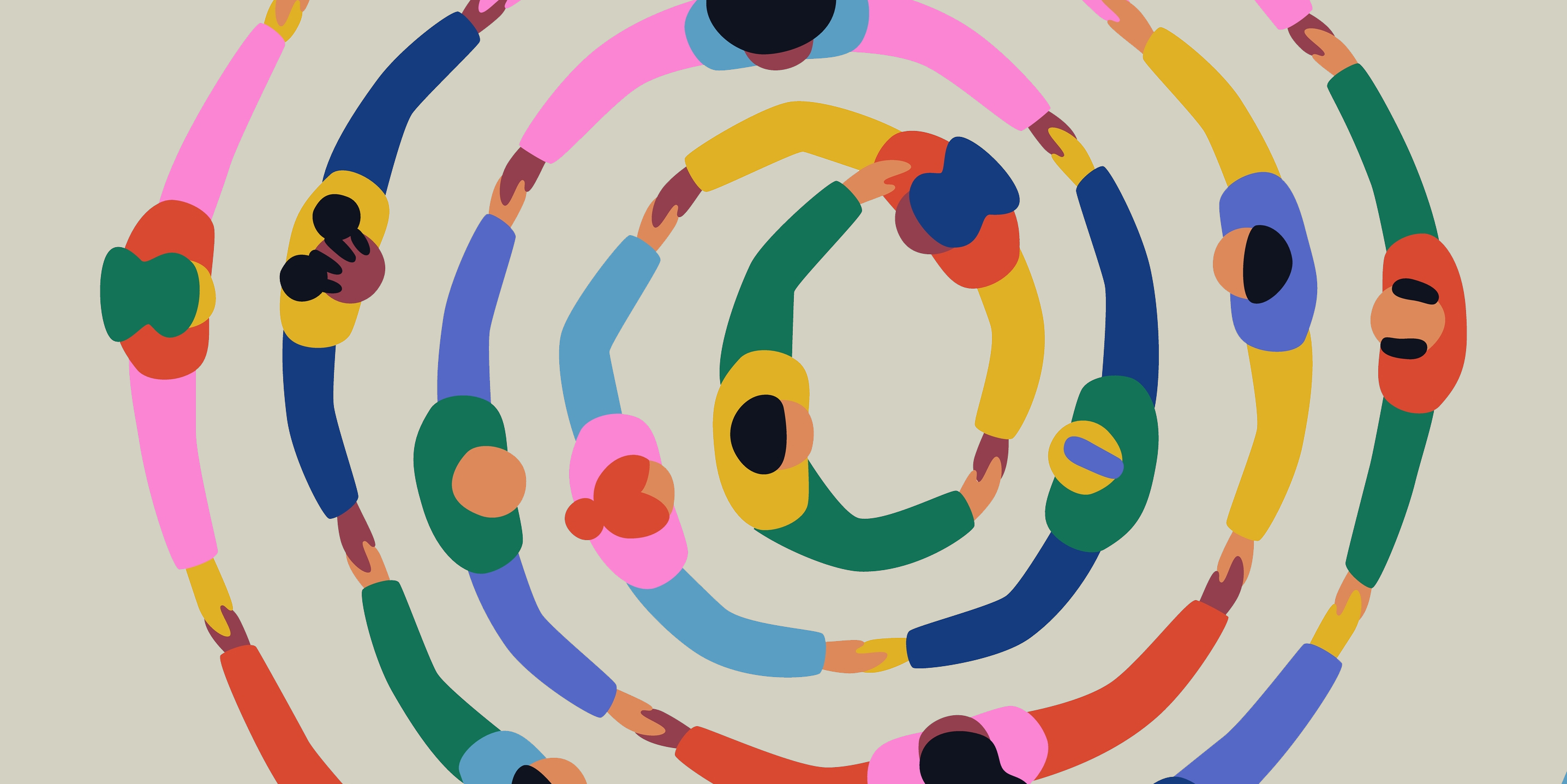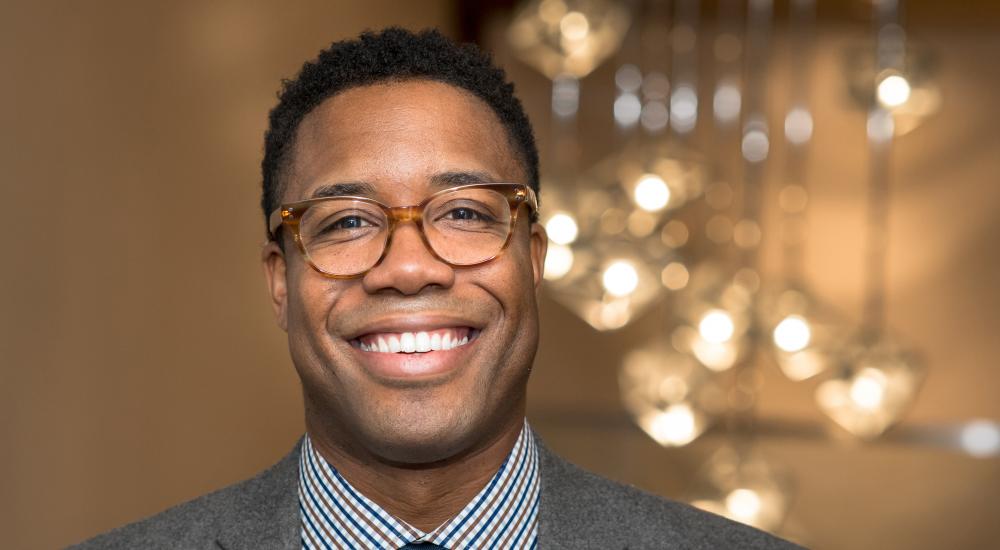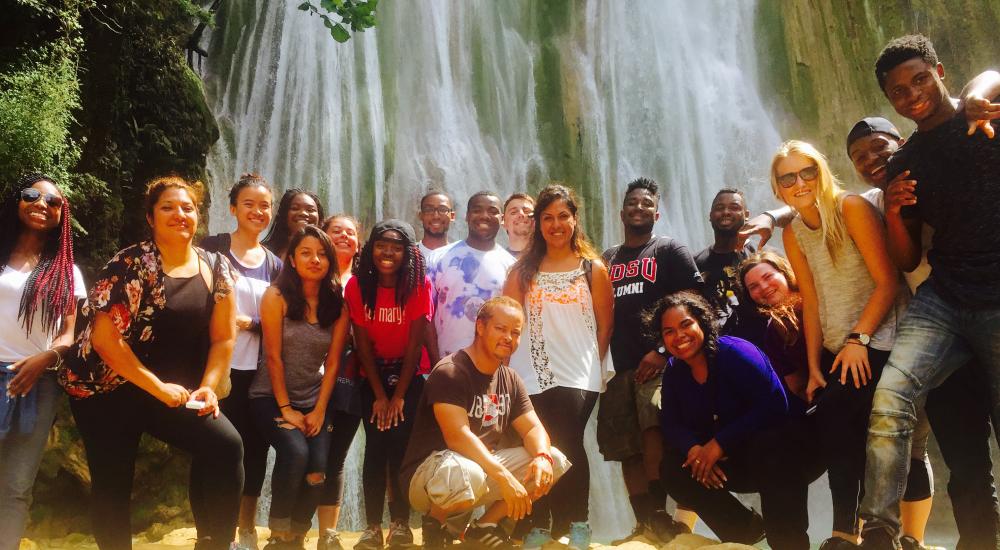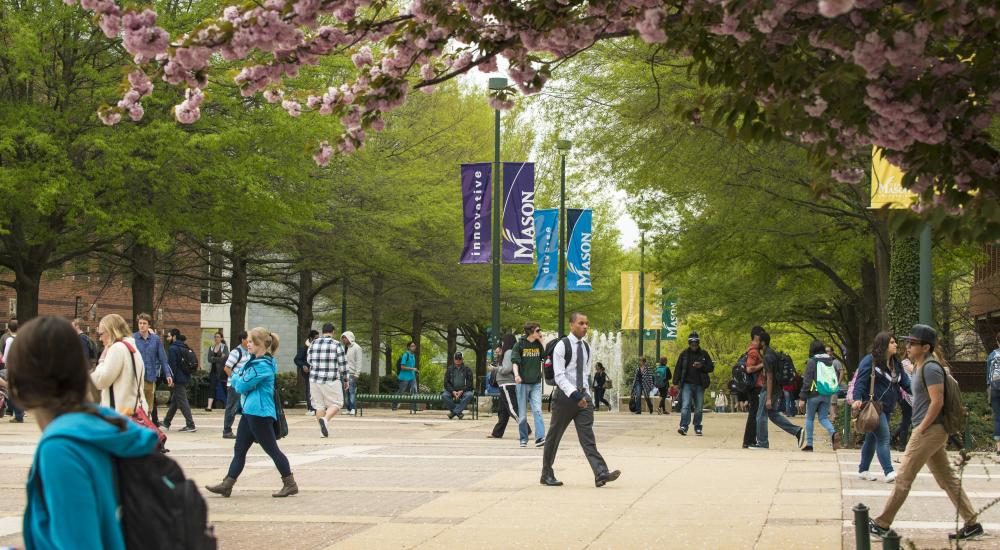Beyond the Basics: Addressing DEI Blind Spots on Global Campuses
The first graduating class at Duke Kunshan University, the Class of 2022, includes students from more than 50 countries and 22 Chinese provinces. However, even before the COVID-19 pandemic required most students to study remotely, faculty and staff at the Chinese campus realized that intentionally forging connections between these disparate groups was what Dean of Student Affairs Raphael X. Moffett, EdD, calls a “blind spot.”
“The assumption was if we got all these students in China and from all over the world, they would be magnetically drawn to each other,” he says. “The most critical part of what we do is train these students and give them the skills to go anywhere on the planet and be successful because they’ve had this experience. We have to be intentional.”
Therein lies the first part of the challenge for diversity, equity, and inclusion (DEI) efforts on campuses around the globe—both the branch campuses of U.S. institutions and universities in countries with significant international student populations. While contexts and ethnicities may differ, the most visible problem is a universal one: Whether due to comfort or familiarity, people tend to gravitate to peers with whom they have commonalities.
“The most critical part of what we do is train these students and give them the skills to go anywhere on the planet and be successful because they’ve had this experience. We have to be intentional.” —Raphael X. Moffett
This problem is not a new one. Breaking down cultural barriers has always been a central part of the mission of international education. But while that work is essential to promoting diversity, equity, and inclusion, the work doesn’t end there.
It’s also important to address the same realities that are driving DEI efforts on U.S. campuses—in particular, the growing call to address historical inequities in meaningful ways, even in places where lived experiences of individuals from different backgrounds may look very different.
“A lot of these issues are being driven by dialogues in the United States and the Western world,” says Yorgun K. Marcel, MS, associate dean for university life at George Mason University Korea (GMU Korea). “Just because you’re hearing about the #MeToo movement in Korea doesn’t mean it follows the movements in the United States or Europe….We’re trying to get the individuals involved with these efforts to look at the structural ideas behind the headlines.”
Breaking Down Barriers
At the surface level, breaking down cultural and ethnic barriers is what international educators have always aspired to do. But on international campuses, these barriers can complex, nuanced, and significantly different from those encountered in the United States.
At Carnegie Mellon University Africa (CMU-Africa), for example, students from 21 African countries attend master’s degree programs on the campus in Kigali, Rwanda. The campus is looking for ways to connect these students while actively seeking others from Francophone nations, says Gbemi A. Disu, MBA, executive director of CMU-Africa.
“There are different kinds of diversity, and it’s very different from the United States,” she says. “When you come with that lens, it doesn’t quite work as copy and paste.”
And at international universities, the experience must be filtered through specific—and culturally sensitive—lenses. The University of Auckland, for example, serves a diverse population, including students from 120 countries, the largest concentration of Pacific Islanders living outside of their home countries, and New Zealand’s own Māori population—which, for historical reasons, is considered a treaty partner instead of an ethnic subgroup.
“Even the way we frame it is different,” says Ainslie Moore, MPP, deputy director of the university’s international office.
For U.S. branch campuses, cultural acclimation is often “flipped” from the typical model on domestic campuses, says Shannon Davis, PhD, associate dean for faculty and academic affairs at GMU Korea. Efforts at GMU Korea focus on supporting inbound students coming from the United States and elsewhere as they acclimate to Korea, including a chingu (buddy) program, which pairs incoming students with Korean peers who help them navigate cultural changes and logistical issues. The program has proven so successful that it transitioned from a student activity to a formal program supported with scholarship funding.
These programs are increasingly supplemented with an intentional equity lens. “We emphasize the importance of DEI from the very beginning of our students’ college careers,” says David Pe, EdD, dean of students at New York University (NYU) Shanghai, whose student body includes students from China and more than 80 other countries. Orientation week efforts include a first-year dialogue program that brings together diverse student groups to discuss issues of personal identity and community service events off campus.
Such initiatives can hit close to home—literally. At Duke Kunshan, intentional efforts begin by pairing all international students with domestic roommates. “It brings them together out of necessity,” Moffett says.
Supporting the Historically Underserved
One common equity imperative at institutions around the globe involves serving historically underserved populations. Two key populations on almost every continent are Indigenous and displaced peoples, and many institutions are making more intentional efforts to support both groups.
The University of Auckland has two pro vice-chancellors devoted specifically to its Pacific and Māori student populations, and the university is shifting to bilingual education. “We are leaning into making the university feel like a place where the Māori are welcomed and their values are acknowledged,” Moore says.
That includes culturally responsive supports such as Tuākana, small-group learning communities that connect incoming students to peers, faculty members, and university leaders. This lens also applies to inbound international students who come from Native populations in North America and elsewhere and are encouraged to participate in welcoming ceremonies known as pōwhiri.
“There are different kinds of diversity, and it’s very different from the United States. When you come with that lens, it doesn’t quite work as copy and paste.” —Gbemi Disu
Displaced populations—people who are often undocumented and escaping traumatic situations—are increasingly becoming global. Rwanda has welcomed refugees from across the continent and, more recently, from Afghanistan, including students, faculty, staff, and family members from the country’s only boarding school for girls. CMU-Africa is seeking ways to support these populations, working with nongovernmental organizations with expertise in working with displaced populations to understand their needs and structure admissions processes to support them, Disu says.
These efforts become more complex when populations recognized as disadvantaged or marginalized in the United States—including people with disabilities and the LGBTQ community—face cultural barriers elsewhere in the world.
“You have to be sensitive to local culture and laws,” says Disu, who while working in Asia had to balance the policies of her home campus with local laws. “Being intentional in the areas you pick in the short run so you have some wins is really key,” she says.
In Korea, for example, where public attitudes toward LGBTQ issues have improved but same-sex marriage remains illegal, GMU Korea scheduled awareness events, including Pride Week activities and a drag show co-sponsored with another U.S. campus before the pandemic.
It’s also important to recognize that, as in the United States, DEI efforts don’t just involve bringing underrepresented populations to campuses. “That’s the inclusion part,” Disu says. “How do we help them persist?”
Sustaining Structural Change
While remaining sensitive to local contexts, international educators must resist the urge to consider the difficult work involved in DEI initiatives on U.S. campuses and conclude that “that’s not an issue for us here,” as Moffett says.
“In the United States, it’s more about putting things in place to dismantle historical paradigms so we have diversity, equity, and inclusion, but here, some people don’t even have that context, and some have a bit,” he says. “The opportunity is to pull them all together to have a baseline of understanding.”
For example, at CMU-Africa, race is less of an issue than it historically has been on U.S. campuses, but the college’s STEM-focused mission has made it imperative to focus on gender, says Disu. The fact that there are women in leadership roles in Rwanda—including the nation’s minister of information communication technology and innovation—has helped with those initiatives, but addressing structural barriers requires a broader perspective.
The campus is improving gender equity in its programs by building a pipeline of female STEM graduates, including through mentorship programs and coding camps for high school students. “It’s a long-term strategy that in 10 years people may apply and come to our master’s program,” Disu says. “But talking to students as young as high school will help us to build a system to be successful.”
Another structural barrier involves faculty, staff, and the relationships between the two. While many global institutions are intentional about recruiting faculty members from around the world, campus staff tend to be hired locally and face both cultural barriers and historical marginalization in campus affairs—or, as Davis puts it, being treated as part of the “infrastructure.”
“With staff largely being local and faculty coming from multiple places, how do we navigate structural hierarchies layered onto the cultural differences?” she asks. “So much of the DEI work focuses on peer differences and peer-to-peer connections, but that doesn’t always fit into the organizational structure.”
U.S. branch campuses also must contextualize institutional efforts to accelerate DEI at their home campuses. At GMU Korea, for example, a DEI task force co-chaired by Marcel and Davis has focused on investigating issues surfaced during similar efforts on GMU’s main campus earlier this year. The goal is to determine “what’s possible, what’s worked, and what’s relevant for the Korean context,” Davis says.
“With staff largely being local and faculty coming from multiple places, how do we navigate structural hierarchies layered onto the cultural differences? So much of the DEI work focuses on peer differences and peer-to-peer connections, but that doesn’t always fit into the organizational structure.” —Ainslie Moore
Students, faculty members, and staff on the task force are preparing to make their first round of recommendations to the GMU Korea community in the coming month. Because the task force is a formal structure aligned with similar efforts at the institution’s main campus, the goal is to build its recommendations into strategic plans, which could result in budgetary support to sustain efforts, according to Marcel.
Other international campuses are creating new structures to sustain contextually relevant DEI efforts. Several U.S. branch campuses—including CMU-Africa and Duke Kunshan—are currently in the process of hiring DEI-specific leadership to support student efforts and inform policies around DEI issues.
At NYU Shanghai, a diversity initiatives team coordinates a wide range of activities, including orientation week activities and a student-focused program called LEAD. LEAD brings students together to discuss diversity and social justice, funds student projects, and provides engagement and leadership opportunities “to find concrete ways to raise awareness and promote greater understanding,” Pe says. This summer, a student diversity task force began engaging the campus community to “reflect and ask questions,” he adds. (See more below.)
Questions that Drive DEI Efforts
NYU Shanghai’s student diversity task force is asking the following questions of themselves and the campus community:
- In what ways have we been reactive vs. proactive?
- What resources do we have internally and externally?
- What are the areas of interest and topics that are most relevant to this community?
- Do various social identities have clear definitions or context within the local cultural environment?
- To what degree do our faculty, staff, students, and university leadership understand, value, and appreciate diversity?
- What academic disciplines do well around diversity? What disciplines struggle?
- Is there a pedagogy that allows us to approach diversity work in our academic environment?
International educators also must question their own assumptions. For Moffett, who spent most of his career on U.S. campuses with comparatively small numbers of international students, Duke Kunshan has been “the inverse of what I’ve experienced in other places,” he says. “I can’t take a Western frame of mind and transfer it.”
He recommends taking an environmental scan to determine the best strategies to “position our students to be critical change agents.” Undertaking a scan exercise on global campuses can have an added benefit for institutions in the United States: informing a more nuanced and responsive approach to internationalization there. Marcel points to the shared experiences of students at GMU Korea as a prime example.
“You hear [Korea] is a very homogenous culture, but there are so many layers—Koreans here, Korean Americans, ethnic Koreans moving back for education,” he says. “You have this cultural nuance that gets that there is no one Korean entity or culture, only subsets, and that’s before you get into other subsets like gender and sexual orientation. It’s about the intersectionality. As we’re seeing with our U.S. domestic students, you can quickly shift from majority to minority depending on where you stand. That gains even more importance in this world where you’re even more interconnected.” •
Study Abroad: Flipping the Lens
International offices abroad often face a challenge familiar to their U.S. peers—encouraging more students from underserved populations to participate in study abroad opportunities. That’s a particular challenge in New Zealand, given its geographic isolation and a historical focus on traditional study abroad programs that didn’t always connect with Māori and Pacific student populations, according to Moore.
“Five years ago, the only way a University of Auckland student would have studied abroad was [through] a semester-long program. [Those students were] White, middle-class, and female,” she says. “That’s not who all our students are.”
The university aimed its efforts on correcting misperceptions that study abroad is a “nice-to-have” by focusing on career outcomes, communicating with parents, shifting to short-term programming, expanding scholarship options to offset the significant costs of long-distance travel, and, importantly, creating new opportunities to connect with Indigenous students in other parts of the world. For instance, a recent short-term program sent 20 students to Brazil to focus on Indigenous rights in the country.
“Looking at feedback, students valued the opportunity to connect with students from similar cultural backgrounds,” Moore says.
About International Educator
International Educator is NAFSA’s flagship publication and has been published continually since 1990. As a record of the association and the field of international education, IE includes articles on a variety of topics, trends, and issues facing NAFSA members and their work.
From in-depth features to interviews with thought leaders and columns tailored to NAFSA’s knowledge communities, IE provides must-read context and analysis to those working around the globe to advance international education and exchange.
About NAFSA
NAFSA: Association of International Educators is the world's largest nonprofit association dedicated to international education and exchange. NAFSA serves the needs of more than 10,000 members and international educators worldwide at more than 3,500 institutions, in over 150 countries.
NAFSA membership provides you with unmatched access to best-in-class programs, critical updates, and resources to professionalize your practice. Members gain unrivaled opportunities to partner with experienced international education leaders.
















